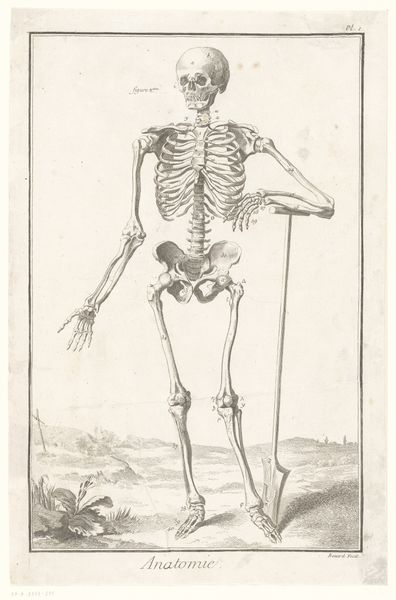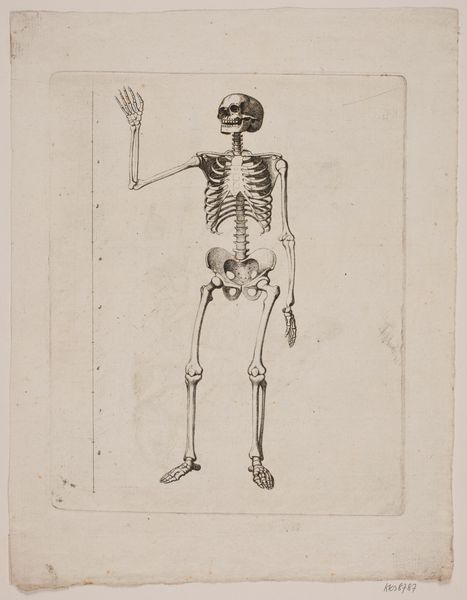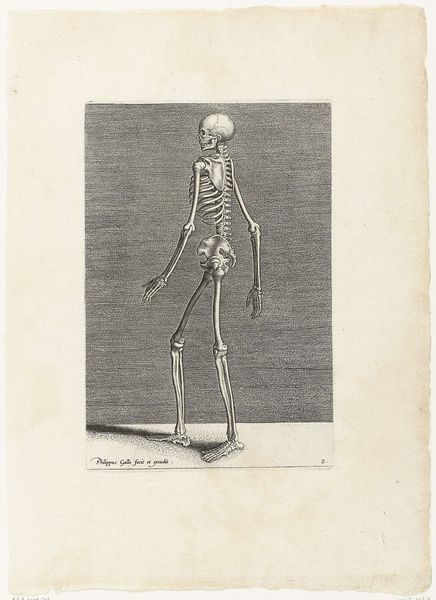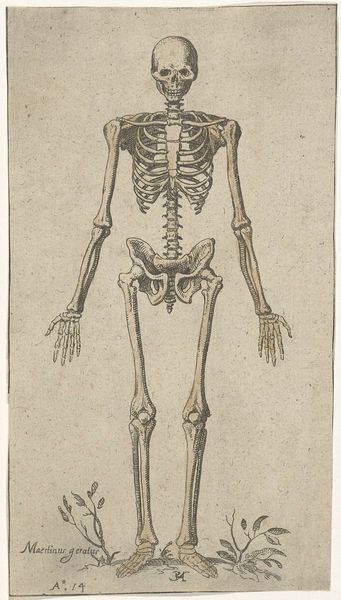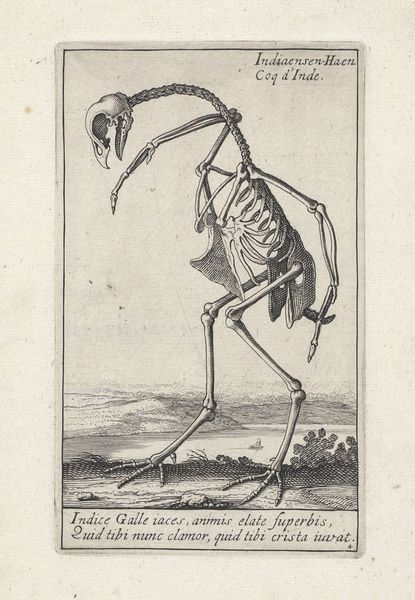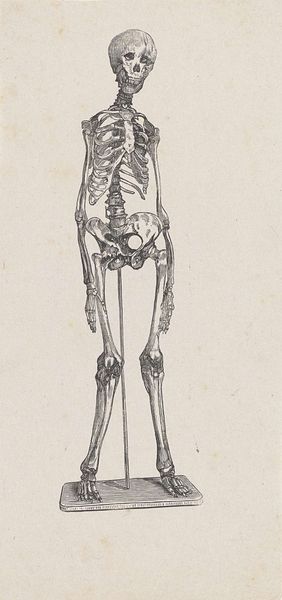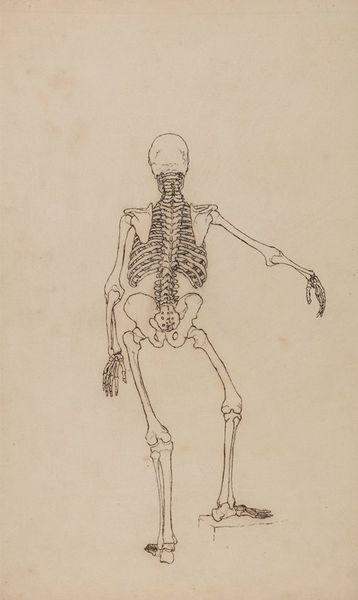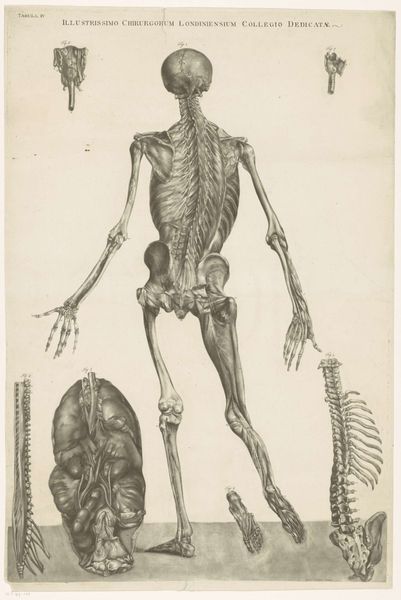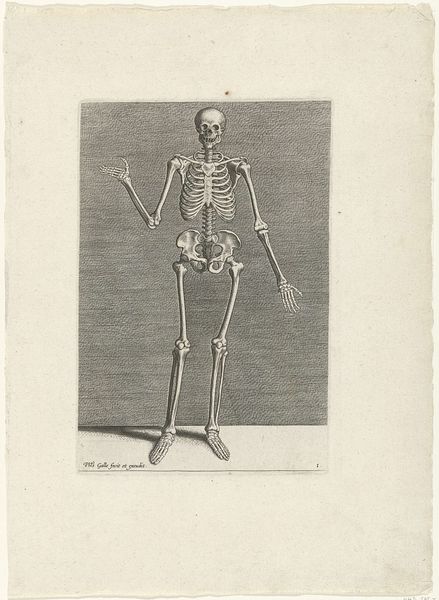
drawing, paper, ink
#
drawing
#
imaginative character sketch
#
quirky sketch
#
baroque
#
figuration
#
paper
#
personal sketchbook
#
ink
#
idea generation sketch
#
sketchwork
#
pen-ink sketch
#
sketchbook drawing
#
storyboard and sketchbook work
#
sketchbook art
#
fantasy sketch
Dimensions: height 168 mm, width 123 mm
Copyright: Rijks Museum: Open Domain
Curator: Before us, we have Pieter Feddes van Harlingen's drawing, titled "Skelet, van achter gezien," created around 1614. It's ink on paper, currently held in the Rijksmuseum collection. Editor: It strikes me as quite playful for a depiction of death! There's something almost jaunty in the posture, the splayed fingers. It lacks the gravity one might expect. Curator: Indeed. Note the careful articulation of skeletal structure. The linework, while somewhat stylized, focuses acutely on conveying anatomical accuracy, particularly in the rib cage and spinal column. Van Harlingen seems interested in the visual puzzle of the body. Editor: Absolutely, and I wonder about its function in the period. The early 17th century saw an increasing awareness of the human body and an ongoing interest in medicine. Depictions like this probably resonated within the scientific community but also served as memento mori, influencing artistic depictions of death as a form of political statement during religious turmoil. Curator: Interesting. It begs the question then, where does "art" fit in terms of medicine. It must be recognised that the formal characteristics such as use of line, contrast between ink and negative space – become the expressive vehicles which contribute just as much to our interpretation of what constitutes a 'skeleton.' This reminds me also of the artist’s personal, theoretical engagement with rendering such challenging forms through shape theory. Editor: And given the ongoing struggle against the Catholic church, artists who showed the human form would risk censure or even condemnation. We have to remember it was always high stakes for the individual artist, too! So something as benign-looking as skeletal sketches always risked an implicit or explicit political dimension depending on when, how, and to whom these images were circulated. Curator: Very true. Thinking back on its function then, our ability to appreciate form also necessitates an acknowledgement of the volatile politics during the time this image was produced. I’m quite humbled. Editor: Likewise; considering it this way gives even simple skeletal figures layers of new weight.
Comments
No comments
Be the first to comment and join the conversation on the ultimate creative platform.

